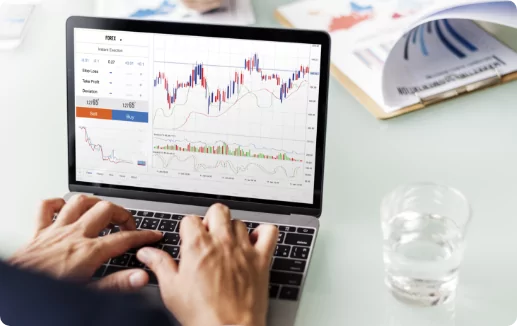
In the easiest way, parity expresses the ratio of country currencies to each other. The economic conditions of the countries, the interest rates of the country units are the factors affecting the parities.
Parities are defined by writing the names of the currencies side by side. For the Euro Dollar parity, the parity shortening is directly in the form of “EURUSD”. This is defined as the parity abbreviation of the euro and the US dollar.
Currency pairs are traded in the foreign exchange market, also known as the forex market. It is the largest and most liquid market in the financial world. These market currencies allow for buying, selling, exchanging and speculating. It also enables the conversion of currencies for international trade and investment.
Calculation in parities is not as difficult as it is thought. As shown in the image below, the base currency of the currencies in the parity is divided by the counter currency and the parity value is obtained.
The calculation process in pairs is found directly by dividing each other. Euro/dollar and Euro-Dollar parity balance is found. In case of Dollar / Euro, Dollar Euro parity will be found. There are many parities among the parities in the Forex market. According to the traded and transaction volumes, the first ones that come to mind are as follows:
There are as many currency pairs as there are currencies in the world. The total number of currency pairs in existence changes as currencies come and go. The daily traded volume for a pair categorizes all currency pairs.
Parities are divided into types according to the currencies in them. It is divided into 3 types among parity types. These are major, minor and exotic pairs.
The pairs found with the ratio of the seven major currencies in the world are called major parities. These 7 major currencies in the world are the currencies that are always controlled and followed in the economy.
Euro/Dollar parity, a widely traded currency pair, is a major parity. Displayed as EUR/USD. In fact, it is the most liquid currency pair in the world because it is the most traded currency pair.
The currencies that trade the most against the US dollar are referred to as major currency pairs, which include:

If you compare one of the 7 major currencies with one of the other currencies, the parity you encounter is defined as the minor parity.
AUD/JPY, AUD/CHF, AUD/CAD, CAD/CHF, CAD/JPY is the first minor parity that comes to mind. These can also be specified as the most traded in the minor parity. In this category, Euro, Japanese or English sterling minor pairs come to mind first.

Parities made between all non-major currencies grouped under the name of other currencies are called exotic pairs. The total transaction volume is low. Even the lowest parities are collected in this category. However, local investors are generally interested in exotic pairs to be followed in their own countries.
Exotic currency pairs include currencies of emerging markets. These pairs are not that liquid and the spreads are much wider.
Euro-dollar parity, which has the highest transaction volume in the world, is traded with this parity in foreign exchange transactions. The parity calculation is made so that the base currency is at the top and the counter currency is at the bottom. The currency written at the bottom is the currency that always changes the balance. For this reason, the dollar is included in the EURUSD parity as a currency that changes the balances. The Euro, which is used as the common currency in the European region, does not very much, so the exchange rates are very low. The direct dollar has the biggest influence in this pair.